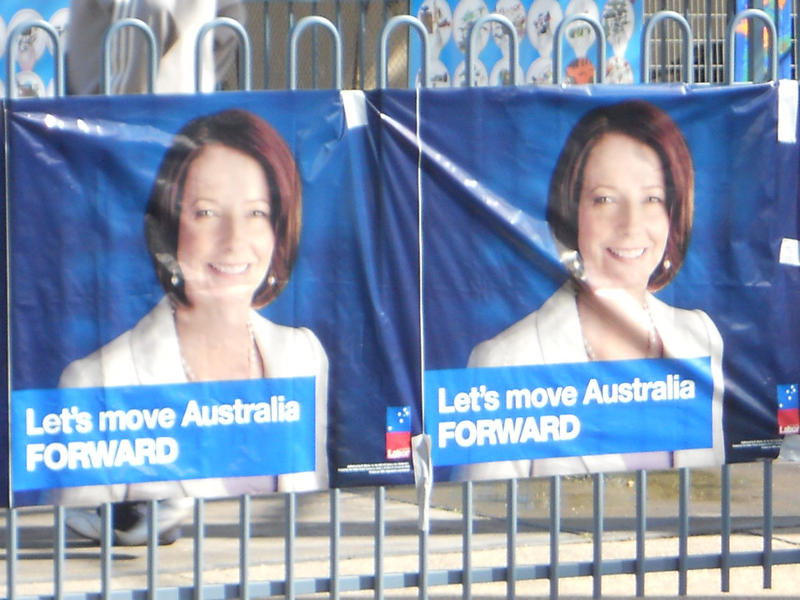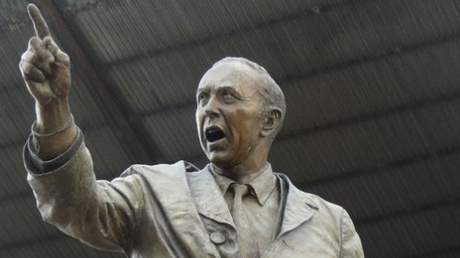
ELECTIONS ARE usually communicated by politicians - and reported by the media - as if they are unique, one-off events entirely about the present day; as well as, to some extent, the future and what a future government would do if elected.
This timeframe is particularly obvious in media reporting which tends to focus heavily on the day-to-day campaign activities, especially of the leaders.
When I studied a large sample of news reporting from the 2001, 2004 and 2007 elections for my book How Australia Decides (Cambridge University Press, 2011), I found that the news agenda was dominated by the two major parties’ planned events of each day.
The focus was especially on party leaders’ campaign activities, including any public statements or media interviews the leader gave that day, any policy launches they might have performed, or any electorates or shopping centre visits they may have undertaken.
Looking back to previous elections is one way to add context, depth and perspective to the current contest
The 2007 election campaign
In 2007, Labor and Kevin Rudd were especially successful at using their daily campaign events to attract news media coverage.
Every night of the campaign, an ever-smiling Rudd was shown in an active and highly visual pose made for TV. There he was holding up a laptop, looking through a glass-bottomed boat, doing the hokey-pokey on the street, walking across a paddock, buying a train ticket, handing out sausages, eating a hotdog (with his tie casually thrown over his shoulder), shovelling grass off the back of a ute on farm, holding up a massive stack of papers (with signatures opposing Workchoices).
Labor’s 2007 election campaign was a made-for-television campaign and it worked because news media focus on ‘news’ – what is new, what happened today. This naturally lends itself to a focus on the staged, daily events of the parties.
Those events then tend to dominate election coverage so that in 2007, across the 41 days of the election campaign, 95% of the time the free-to-air TV news bulletins covered the same topic – mostly focused on the events of that day (Young 2011: 163).
Indeed, in the case of Labor’s 2007 campaign, it arguably worked so well that many Australians held on to their positive views of Kevin Rudd long after the election and long after he was deposed and then denounced by his own colleagues.
They could never quite reconcile the picture of Rudd they gained in 2007 with the one that was later presented by others.
But all of this focus on the short-term, on what’s ‘new’, doesn’t always give us the best information to help us understand campaigns and elections.
In some cases, issues and events are not as ‘new’ as they appear. They may be a continuation of campaign practices from by-gone eras, or an adaptation of what’s gone on before.
In other cases, outside of the sound and fury of the day-to-day events, there may be some truly new and interesting things happening. But they have to be put in context, in terms of what has gone on before in Australia before they can be properly understood.
We want to think about what has changed and what has stayed the same
So looking back to previous elections is one way to add context, depth and perspective to the current contest. To pause and think about what has changed, what has progressed and improved and what hasn’t.
For example, to take just two questions: how has Australian society changed because of, and since, previous elections? What issues have remained stubborn policy problems or been recurrent failures in terms of public communication despite the passage of time and the efforts of many to address them?
The 2013 campaign
With Election Rewind, we want to analyse the 2013 election by looking at it through the lens of the past. We want to think about what has changed and what has stayed the same.
This includes: how has campaigning practice changed? How has media reporting of elections changed? But, perhaps most importantly, how have election policies changed?
By researching election policies from the past and comparing those to the policies put forward in 2013, we can think about how policies have changed over time and also about how media reporting of the policies has changed.
This will include major policies such as health, education, welfare and taxation.
Are the parties still talking about the same issues they were 5, 10 or 20 years ago? Do they still see the challenges the same way? Are they making the same (or different) promises than they have in the past? Does the media include more or less detail about policies now?
Thinking about the election this way helps us to focus on the detail of policies and situate them within an historical context. Hopefully, this can then shed some light on the choices Australians make at the ballot box and the implications of those choices.
To make Election Rewind a living experiment, we hope you’ll help by sending us your thoughts, ideas and recollections about elections past. And we hope you enjoy taking a trip down election memory lane.
Reference: Young, Sally (2011) How Australia Decides: Election Reporting and the Media, Cambridge University Press: Melbourne.




